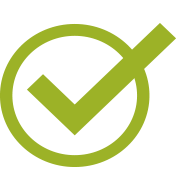Catalog Description
Formerly known as AAD 20
Hours: 72 (36 lecture, 36 activity)
Description: Intended for students nearing program completion and who have determined they will pursue a future as a creative professional. The course covers the development of a professional digital portfolio for emerging creative professionals. Topics include work selection and sequencing, design, and formatting, the integration of written content, as well as portfolio output and distribution. Students will also create professional documents including a résumé, biography, and statement. Professional communication practices and industry expectations will also be covered. (CSU)
Course Student Learning Outcomes
- CSLO #1: Investigate and identify the components and expectations for creative portfolios, by industry or goal.
- CSLO #2: Synthesize visual and written materials into a cohesive professional portfolio intended for a target audience.
- CSLO #3: Design and present a creative portfolio in a manner that demonstrates an understanding of professional practices and presentational skills.
- CSLO #4: Evaluate and critique portfolios created by peers and professionals as well as self-made portfolios.
Effective Term
Fall 2025
Course Type
Credit - Degree-applicable
Contact Hours
72
Outside of Class Hours
90
Total Student Learning Hours
162
Course Objectives
Lecture Objectives:
- Identify the industry, discipline, goal or audience that will be targeted with this portfolio.
- Research related opportunities and identify expectations for the field and outcome.
- Investigate and compile a list of the expected elements in a portfolio based on target industry, discipline, goal, and/or audience.
- Review and critique the success of portfolios by creatives by assessing clarity of message, quality of work, demonstration of skill, and overall professionalism.
- Examine and select a platform for the portfolio based on cost, technology requirements, format, and distribution features.
Laboratory Objectives:
- Compile, sort and categorize work samples that will support the portfolio goals
- Organize works into related categories
- Select work to support specific audiences and outcomes
- Annotate work samples to share key elements
- Draft text content for each work sample, including titles, medium, tools and technology, dates, and other key details
- Digitize and prepare work samples for use in a final portfolio
- Scanning Techniques
- Photographing Techniques
- Image retouching and enhancement processes
- Assemble a Case Study to share an in-depth presentation of a work or collection
- Explain the goals
- Demonstrate the processes
- Identify the tools, mediums, and technologies
- Reflect on the outcome
- Research and draft industry-specific documents for use with the portfolio
- Select and prioritize résumé content for a particular goal or audience.
- Draft a bio presenting résumé details in a third-person narrative format.
- Synthesize inspiration, education, skills, talents and values into an artist/designer/mission statement.
- Summarize the contents of your professional package and their suitability for a related opportunity in a Cover Letter/Letter of Introduction.
- Compose a request for a letter of recommendation that includes sufficient introduction to your goals, the opportunity details and timeline, and your suitability and preparedness for the opportunity.
- Develop a visual brand identity that supports the portfolio pieces, goals and industry expectations.
- Apply the fonts, colors, voice, and other stylistic attributes to the professional documents as well as the visual portfolio to create a unified, professional package.
- Assemble a finished digital portfolio and professional package that can be utilized for marketing, promotion, and application for various opportunities.
General Education Information
- Approved College Associate Degree GE Applicability
- CSU GE Applicability (Recommended-requires CSU approval)
- Cal-GETC Applicability (Recommended - Requires External Approval)
- IGETC Applicability (Recommended-requires CSU/UC approval)
Articulation Information
- CSU Transferable
Methods of Evaluation
- Classroom Discussions
- Example: Research the differences between chronological and functional résumés and reflect on the pros and cons of each format so that you are prepared to share your thoughts with the class. Consider which format will best support the elements that will be included in your résumé and discuss how you came to that conclusion.
- Projects
- Example: Develop a Case Study to showcase a single piece, unified collection, or finished project. Incorporate both visual and text-based documentation to outline the goals, demonstrate the creative process, identify the skills, talents, and tools applied, and highlights self-reflection and growth mindset principles throughout.
Repeatable
No
Methods of Instruction
- Activity
- Lecture/Discussion
- Distance Learning
Activity:
- After the instructor has presented a lecture on the topic of annotating work samples for a portfolio to meet industry standards, the students will be provided a template and asked to populate it with three of their own work samples. They will then develop and add annotations appropriate for their works and their industry. The instructor will offer guidance and support during this activity.
Lecture:
- The instructor will provide a lecture introducing and providing a review of existing portfolios covering a variety of creative industries and goals as a way to identify and demonstrate strengths, and areas where there is room for improvement.
- Students will then contribute to a discussion board or group discussion by sourcing and examining another portfolio sample to share. In the share-out, the student will identify examples of the strengths they observe and make recommendations on ways to improve the presentation or content.
Distance Learning
- The instructor will provide a lesson and presentation on “Messaging and the Professional Portfolio” in which topics such as clarity of message, quality of work samples, presentation of skills, ease of platform use, and overall professionalism are discussed.
- Students will then be asked to evaluate online portfolios of other creative makers in their field, assessing them on these tenets. Prompts such as “Is this the portfolio of an emerging creative, an established creative, or a student? How can you tell?” will be responded to during the assessment. The typed assessment will be shared, along with screen captures and links to the online portfolios being cited.
Typical Out of Class Assignments
Reading Assignments
Read a minimum of 10 short biographies of creative professionals from event websites, such as Adobe MAX. Note the characteristics of each bio and whether they align more with "casual creative" or "professional creative" or "business professional" models. Assess the headshot that is included with the bio and consider how it pairs with the copy/content and voice in the written component.
Writing, Problem Solving or Performance
After learning about the purpose and use of a bio in the professional arena, and reviewing bios that are in use, draft three versions of your bio to meet the models of Casual Creative, Professional Creative, and Business Professional, as outlined in the lecture. Include a unique headshot for each Bio. Ensure each headshot aligns with and supports the personality of the different models.
Other (Term projects, research papers, portfolios, etc.)
Required Materials
- Show your work! 10 ways to share your creativity and get discovered
- Author: Kleon, Austin
- Publisher: Workman Publishing Company
- Publication Date: 2014
- Text Edition: 1st
- Classic Textbook?: No
- OER Link:
- OER:
- Design Portfolios: A Recruiter's View
- Author: Smith, Mark W
- Publisher: Wiley
- Publication Date: 2023
- Text Edition: 1st
- Classic Textbook?: No
- OER Link:
- OER:
- Burn Your Portfolio: Stuff they don't teach you in design school, but should
- Author: Janda, Michael
- Publisher: New Riders
- Publication Date: 2013
- Text Edition: 1st
- Classic Textbook?: No
- OER Link:
- OER:


